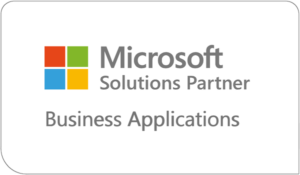Interview with Steven Mulka, Founding Partner, SIS
Interview by: Sarah D. Morgan, SIS Senior Marketing & Brand Manager | Feature Writer

In this THESIS Q&A, Steven Mulka, SIS Partner, talks about user adoption for ERP implementations. He explains that user adoption is the most significant measure of success when it comes to ROI. He shares that it’s clear during implementation training, that many end users are wrestling with how they are going to perform their jobs using this new software. In this conversation, we talk about ways to overcome user adoption challenges.
Q: Steven, tell us how you became interested in technology?
A: I’m a mechanical engineer by degree. In 1981, I was pursuing my engineering degree at Michigan Technological University, where I started working on computers, specifically the IBM 5150 PC – the first personal computer by IBM. I still remember it had a single floppy drive that you had to switch in and out between programs and the operating system. From that point on I was hooked.
Q: How did you become a partner of SIS?
A: In the 90’s I had a company focused on infrastructure and hardware, where I met Mark Kershteyn and Ravi Kannan, my current partners here at SIS. Ravi was my customer, and Mark was also working with me at that time as a subcontractor. Early on, I understood that companies purchase hardware to support business systems, and the future of technology was in software solutions, not infrastructure and hardware. Subsequently, SIS was formed to focus on business applications and solving business problems for our customers.
With the shift away from hardware, I had much more interaction with the user community that uses the software and whose daily life is directly impacted of the software solutions. I gained a deep appreciation for the end users who are working with software day to day do their job and the fact that software should be an enabler, not a hinderance. Personally, the most satisfying thing at the end of the day is watching of evolution of how software solutions can improve the daily lives of our customer’s employees.
Q: And this is probably where you learned that if users aren’t using the solution or part of the solution, the probability of success is lower.
A: Correct. I’ve encountered situations where business owners or decision-makers attempt to impose change or introduce applications into an organization without the proper buy-in from the users that will be directly impacted by the software. To get high user adoption of any new software solution, the users must take ownership in the solution and embrace change. The more the users are involved in decisions, configuration and training the more they drive the solution and overall success of a project.
For instance, if we begin at the initial stages of a typical software purchase, there is an initiative to solve a business problem or improve a business process. The common approach is, “Let’s purchase a software application.” IT then searches for the application and presents what they consider the best solutions available. In many cases the purchasing and decision-making process is not driven by the owners of the business processes. And in the worst case, the evaluation and decision-making process is outsourced to an outside company.
Secondarily, during the implementation, key end users should be intimately involved in the project to direct and guide the solution. You want to cultivate and grow the user community during the implementation process so you have developed strong internal champions and knowledgeable users that can support the larger user community after go live.
Q: How important is user adoption to enterprise ROI and future growth?
A: User adoption is the most significant measure of success and often overlooked as a metric. For instance, at the commencement of an implementation, we typically initiate with a smaller team representing the organization and its users. The broader user community in many cases is not involved until the go live. The first time many end users are involved is typically right before go live, during end user training. You can tell by their expressions, that they wrestle with how they are going to perform their jobs using this new software. Get the core team started and expand the team as quickly as possible to the end users so they have ownership in the process and solution. End User adoption and satisfaction will increase many times over when employees are asked to be part of the solution and not just presented with this is how it works.
Q: At the start of a new implementation, how does a business process owner ensure they have a voice in the success and are involved?
A: Love that question. Implementation teams are always looking for enthusiast and willing participants. Get involved with a positive attitude and be willing to roll up your sleeves and get dirty. Implementing new software is not an easy task. Those that are genuinely willing to be part of the solution and not the problem, will be welcomed into any project team. Embrace the change and look for all the areas that a business process can and will be improved. Reinforce the positive impact with the team and others and you are well on your way to being a champion of the solution.
At the start of any new software system implementation, it’s crucial for many affected employees and resources to contribute to defining the requirements. Identify the following drivers for a business process and then you have a clear road map how to get to your end destination. This involves determining:
- What is our input for a particular process?
- What is our output and desired results?
- How do we define success?
- How do we measure if we have been successful in improving a process?
It is always easier to achieve success if you know what success looks like. A well-defined business process with clear input-output and desired improvements will result in most cases with true business improvements. Since the impact extends to numerous individuals, it’s not solely one person’s responsibility to navigate through the entire process from start to finish. Get others involved and seek input and buy in early in the process across all the players.
Q: What percentage of user adoption is needed for a successful implementation?
A: The ideal goal would be 100%, but that’s not realistic. There will always be employees that will always resist change, and deciding whether they’re on board or need to step aside is crucial. I will categorize users into the following groups:
- The Embracers: Those actively participating in the implementation due to specific skills or volunteering. (These are your champions and key success factors in any implementation)
- The Plodders: Users completing the necessary tasks without fully embracing the change but understanding its inevitability. (Find ways to move The Plodders to Embracers) Sometimes it is as simple as getting them more involved.
- The Nay Sayers: Individuals resisting the change, potentially sabotaging the implementation, and in extreme cases, requiring removal from the project or even the company. (Identify and develop an action plan quickly as they can wreak havoc quickly)
- The End Users: The larger user community involved typically towards the end of the implementation, often leading to user frustration and low adoption rates. Get End Users involved early on so they may become Embracers and even Evangelists.
- The Evangelists: These are the champions of the change, aiming to work with both the Embracers and the Plodders, bridging the enthusiasm gap and creating a more extensive, trained user community.
Q: What is an easy way to get the End User community involved and excited for change.
A: Communicate early and often. As discussed earlier, identify where a change in the Organization and processes will improve how things are done. Communicate those as wins to the Organization. Create excitement and momentum. Methods include regular presentations, like Friday sessions, and sending out the evangelists into the Organization to present the “New and Improved” state of the union. Keep that excitement moving by recruiting other end users to the team to help test and train others both short-term and long-term.
Q: What background should the evangelists have, the Friday trainers?
A: The best trainers are peers who understand the day-to-day business processes and have been involved in the setup and testing of the solution. For example, a field service dispatch person running test cases on dispatching technicians and billing could conduct overview sessions with the Dispatchers in the company. During these sessions they should listen closely to the feedback and look for new recruits to the team. Very few individuals grow up wanting to be an evangelist, but anybody who is passionate and wants to be involved, can be an evangelist or trainer.
Q: Why do companies typically not get end users involved early in the process?
A: In some cases, time constraints hinder getting the end users involved early, but in other cases it is not always realistic given the fact that an organization still must conduct day to day business. The ideal scenario involves workstream leads dedicated to implementation, but this isn’t always feasible. Where possible get as many users involved when practical and that helps spread the load across the organization and reduces the shock factor during go live.
Q: What happens to companies who don’t invest the time into user adoption?
A: Failed implementations often result from a lack of user adoption. Even if people use the system, the true benefits are not realized. Low user adoption correlates with failure or increased chances of failure. Many companies after go live breathe a sigh of relief and then move on to the next project forgoing the real chance to realize huge gains in business process improvements. The real opportunity starts after go live where you want to impower the user community to make suggestions and take ownership of the new processes and solutions. Those same Friday sessions should naturally transform into mini user group meetings where the team discusses and shares ideas on improvements and better ways to use the system. This collaboration when supported properly can dramatically improve user adoption and ownership to the level where true efficiency gains can be felt across the organization.
Q: Is user adoption built into the project plan or the implementation plan?
A: User adoption is integral from day one. Understanding the user’s role in business processes, daily training, and collaboration with workstream leads are ongoing activities to ensure familiarity with the solution early in real-life testing. And as discussed, a few minutes ago, User Adoption does not end with go live, it should continue as a key business objective through at least the first year. As a goal, see if you can embed this continuous improvement process as part of the culture within your employee’s day to day functions.
Q: As we end here, you talk about the storms of change referring to user adoption. What is the storm of change?
A: The storm of change in software implementation affects every user and process in the organization. It’s a transformative period, marked by uncertainty and resistance. Anticipating the storm, preparing the organization, and ensuring awareness and smart strategies are in place is essential for navigating these challenges successfully.




